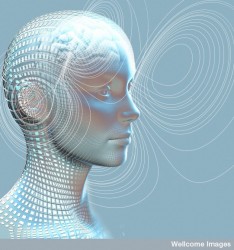
When two sensory inputs – a sight and a sound – occur close in time, the adult brain can “bind” them and conclude that they result from a single event (synchronous). However, infants have a larger “temporal window” than adults and bind events that are more distant in time. Little is known about how this capacity develops during childhood.
Mark Wallace and colleagues compared the ability of 10- and 11-year olds and adults to detect asynchrony of a visual stimulus, an image on computer screen, and an auditory stimulus, a tone.
Like infants, children had a much larger temporal window than adults. And children were more likely to call events “simultaneous” when the auditory stimulus came before the visual stimulus – but not vice versa.
The findings, reported in the February issue of Neuropsychologia, show that this process continues to develop into the second decade of life. Because abnormalities in multisensory processing may contribute to disorders such as autism and dyslexia, this information could inform diagnostic strategies and interventions for these disabilities.